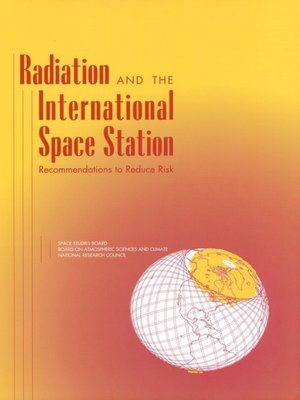Radiation and the International Space Station
ebook ∣ Recommendations to Reduce Risk
By National Research Council

Sign up to save your library
With an OverDrive account, you can save your favorite libraries for at-a-glance information about availability. Find out more about OverDrive accounts.
Find this title in Libby, the library reading app by OverDrive.



Search for a digital library with this title
Title found at these libraries:
| Library Name | Distance |
|---|---|
| Loading... |
A major objective of the International Space Station is learning how to cope with the inherent risks of human spaceflight—how to live and work in space for extended periods. The construction of the station itself provides the first opportunity for doing so. Prominent among the challenges associated with ISS construction is the large amount of time that astronauts will be spending doing extravehicular activity (EVA), or "space walks." EVAs from the space shuttle have been extraordinarily successful, most notably the on-orbit repair of the Hubble Space Telescope. But the number of hours of EVA for ISS construction exceeds that of the Hubble repair mission by orders of magnitude. Furthermore, the ISS orbit has nearly twice the inclination to Earth's equator as Hubble's orbit, so it spends part of every 90-minute circumnavigation at high latitudes, where Earth's magnetic field is less effective at shielding impinging radiation. This means that astronauts sweeping through these regions will be considerably more vulnerable to dangerous doses of energetic particles from a sudden solar eruption.
Radiation and the International Space Station estimates that the likelihood of having a potentially dangerous solar event during an EVA is indeed very high. This report recommends steps that can be taken immediately, and over the next several years, to provide adequate warning so that the astronauts can be directed to take protective cover inside the ISS or shuttle. The near-term actions include programmatic and operational ways to take advantage of the multiagency assets that currently monitor and forecast space weather, and ways to improve the in situ measurements and the predictive power of current models.







